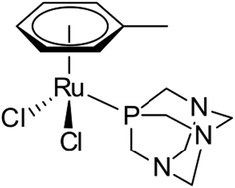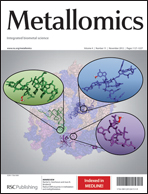Combination of metallomics and proteomics to study the effects of the metallodrug RAPTA-T on human cancer cells
Abstract
An approach to characterize the interactions of RAPTA-T, a novel ruthenium-based anticancer drug candidate with intriguing antimetastatic properties, with human ovarian cancer cells in vitro is described. The distribution profile of the metallodrug within the cancer cells was determined by (size exclusion chromatography)-inductively coupled mass spectrometry combined with subcellular fractionation procedures (metallomics). Multidimensional protein identification technology (MudPIT) was then used to obtain insight into the alteration of the cellular proteome upon RAPTA-T treatment. The metallomics approach reveals striking differences in the intracellular behavior of the drug between cisplatin-sensitive and resistant cell lines and provides clues on possible mechanisms of action as well as detoxification, quantitative proteomics based on spectral counting sheds light on cellular response mechanisms to metallodrug treatment.


 Please wait while we load your content...
Please wait while we load your content...